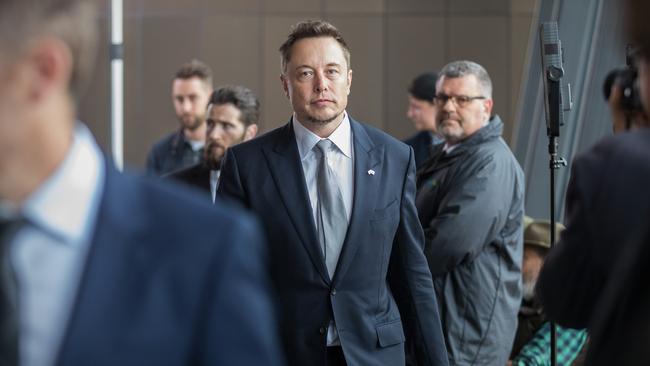Simon Hackett: Elon Musk Tesla project sets up South Australia as world leader in battery storage
AMERICAN billionaire Elon Musk will help South Australia become a world leader in the use of battery storage, writes Simon Hackett.

Opinion
Don't miss out on the headlines from Opinion. Followed categories will be added to My News.
- Battery deal ‘will spark local business’
- Tesla to build world’s largest battery in Mid-North
- Separate plan to build billion-dollar solar power plant in Riverland
- Who is Elon Musk — and could he save SA’s power grid?
- Jay Weatherill’s $550m power security plan
THE South Australian Government’s decision last week to contract Tesla to deploy a 129-megawatt hour (MWh) lithium ion battery farm was a welcome step towards solving the State’s power problems.
Elon Musk’s promise to deploy 129 MWh of batteries for SA in 100 days is a big challenge, even for a US$50 billion company like Tesla. This ambitious project demonstrates the growing maturity of energy storage systems and confirms the integral role that batteries will play in the successful exploitation of renewable energy sources. I look forward to seeing a system of that scale running on the South Australian grid as soon as possible.
The significance of this contract was not a competition between Tesla and other battery companies. It’s about renewables and energy storage demonstrating their capacity to technically and affordably replace fossil fuels.
There is growing recognition that energy storage is the missing link in the renewable energy revolution. In Australia and elsewhere, we’ve seen an enormous uptake in the generation of solar and wind-powered energy. But the problem with these energy sources is their intermittency. The sun does not always shine nor does the wind always blow.
Indeed, when these sources feed energy into existing fossil-fuelled energy grids, those systems can experience significant challenges when clouds suddenly cover the sun or the wind drops off, causing a collapse in energy supply.
Energy storage systems such as batteries are one way to solve this problem of intermittency. Batteries charged up by the shining sun and the blowing wind can almost instantly supply energy if those energy sources drop off. South Australia and Victoria are making major investments in grid-scale energy storage systems to address some of the problems that arise during the Australian economy’s transition from fossil-fuel based energy to renewable energy.
Batteries have the potential to change the entire structure of energy distribution systems. Currently, the grid is a treelike structure where energy emerges from distant generators, then flows through the trunk and along the branches to the ‘leaves’ of each house. That hierarchical system can run into many problems.

While the obvious one is a major power outage, the most common issue in grids is maintaining grid stability in terms of frequency and voltage, especially at the extreme endpoints of the energy delivery path to customers. The proliferation of residential solar panel systems without batteries actually makes it harder for grid operators to maintain grid stability.
Everything changes when batteries are added to homes and businesses as they can be aggregated as a distributed ‘virtual generator’, embedded deeply throughout the grid’s customer base.
In future, a grid operator could call upon this virtual generator to dynamically balance frequency and voltage — precisely where and when that balancing is most needed. Contributing to grid stability is the sort of service that battery owners might expect to receive payment for when grid operators need it.
It’s not hard to envisage that in a few years’ time, energy companies will pay their customers for providing on-demand energy for a lower cost than the current solution — gas generators which are turned on only to meet peak demand periods. As well as helping individual premises, batteries will help drive down energy costs for the entire network.
Both in developed or developing nations, we will see solar PV energy systems augmented by batteries provide millions of people with electricity, many of whom the grid may never reach. As efficiencies improve, costs will fall.
This big battery project sets South Australia up as a world leader in the use of battery storage with renewable energy — a true signpost to the future of the world.
As CEO of Redflow, an Australian company that has designed and delivered the world’s smallest zinc-bromine flow battery — a unique energy storage system that overcomes many limitations inherent in traditional batteries such as lithium-ion or lead-acid — I’m thrilled about that.
The global energy storage market is huge and is largely untapped. This project will act as a validation point and an accelerant of change.
From here on in, every battery manufacturer is likely to be busy for the foreseeable future, all working to their respective technical strengths and into their respective core markets. There’s a whole world out there to change, and we look forward to doing our part.
Simon Hackett is chief executive of Redflow


